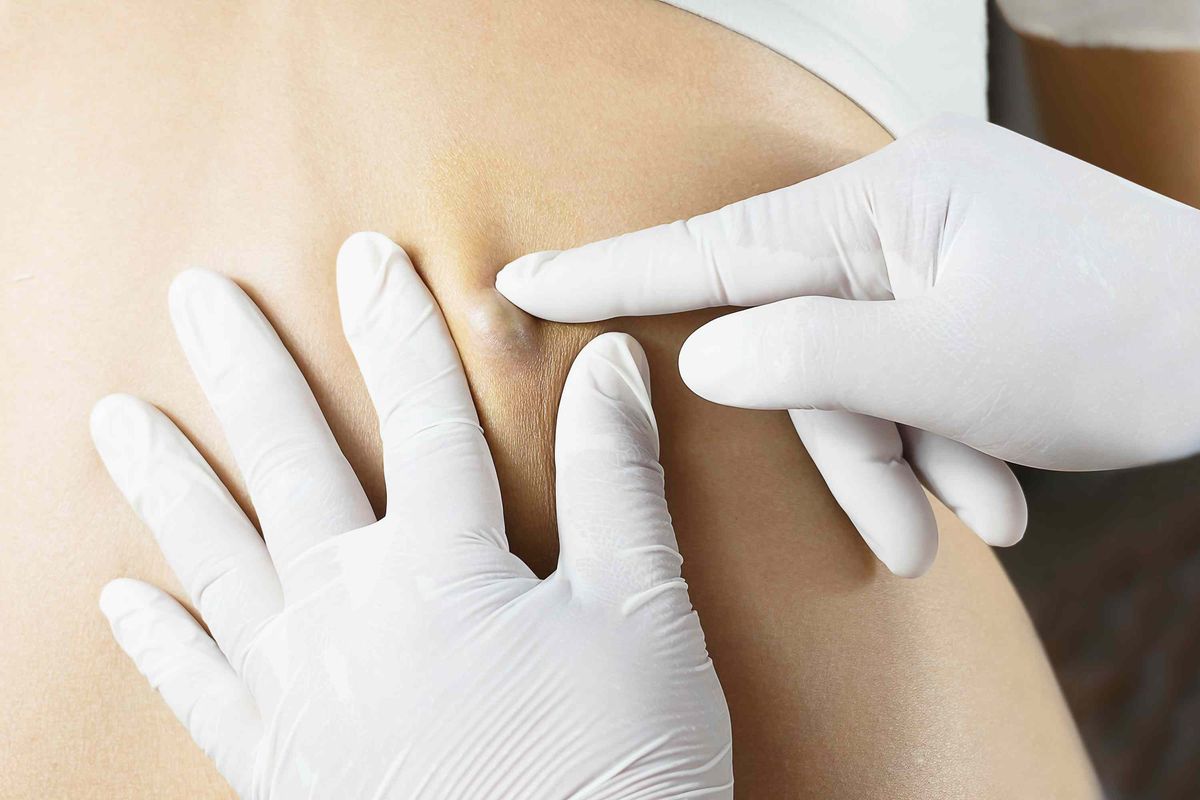Types of Cysts

A cyst is a growth that forms on the body. Cysts can have a variety of causes and symptoms. Various treatment options are available, including surgical removal, antibiotics, and pain medication. A biopsy may also be performed to determine the exact type of cyst. A cyst that does not drain well may require lancing, which involves cutting the growth open and wrapping it with sterile bandages. Until the cyst is completely drained, doctors must monitor for secondary infections.
Sebaceous cyst
A lump on your skin that feels hard to the touch or has no clear origin could be a benign sebaceous cyst. These growths occur underneath the surface of the skin. They are caused by keratin trapped near the hair follicle or skin duct. These growths can be uncomfortable or even painful. If you have any of these symptoms, you should see your healthcare provider get a proper diagnosis.
Sebaceous cysts are often diagnosed with a physical examination and sometimes a biopsy. They are not cancerous and need not be removed unless they become a nuisance. However, in some cases, cysts may become infected and require treatment. Treatment may include a course of antibiotics or an incision and drainage. However, if a cyst affects your quality of life, your doctor may recommend a surgical procedure to remove it. This surgery is usually performed using local anesthesia.
Bartholin's gland cyst
A Bartholin's gland cyst occurs in the inferior third of the posterolateral wall of the vagina, near the vaginal opening. The cyst develops when the duct that carries mucus becomes clogged. It usually doesn't cause pain, but it can increase in size and develop into an abscess. Treatment options vary depending on their size and location.
Bartholin's duct cysts may rupture and drain on their own or require surgical excision. If they do not drain, they should be treated with antibiotics. The infection usually involves a polymicrobial infection, so broad-spectrum antibiotic therapy is recommended. Patients over 65 should be referred to a gynecologist if they develop a recurrent infection.
Although Bartholin's cysts are rarely painful, they can become infected and become a severe medical problem. The infection is called a Bartholin's abscess and can be caused by many different types of bacteria. Among these are intestinal and sexually transmitted bacteria. More than 60 different types of bacteria have been identified in Bartholin's gland abscesses.
Epithelial-lined cyst
An epithelial-lined cyst is filled with laminated keratin and is lined by stratified squamous epithelium. This type of cyst is located within the dermis. The lining is similar to the surface epithelium but lacks the rete ridges and granular layers.
This type of cyst is rare and requires a careful diagnosis. It must be differentiated from mucoceles encroaching on the orbit. Although rare, intratarsal goblet-cell cysts have been reported in the medial eyelid and orbit. These have equal proportions of ciliated and squamous epithelium. Immunostaining is essential in making this distinction.
The material in the cyst is composed of keratin flakes, cholesterol crystals, and free red blood cells. There is a small amount of fibrin. Mixed degenerate leukocytes and xanthomatous macrophages are present. The inner surface of the cyst is lined with a pseudostratified squamous epithelium and a multilaminar respiratory epithelium. The transition between these two types of epithelium is gradual.




